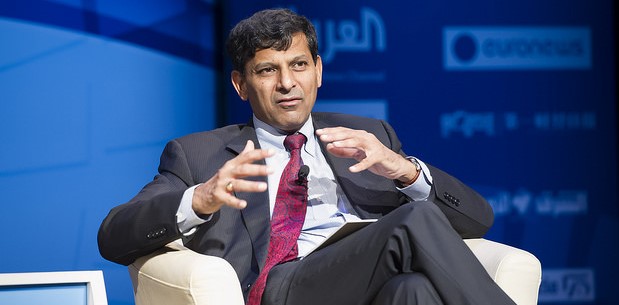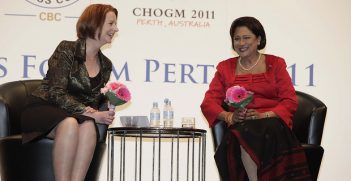The Cult of India's Chief Banker

Raghuram Rajan finishes his three-year term as Reserve Bank of India Governor on 4 September but his exit will not be an ordinary one. Rajan has been targeted for speaking on issues beyond his mandate, which did not go down well with the Indian Government. All eyes are now set on who will be his successor and the lessons to learn from Rajan’s time as governor.
Experts with an interest in the Indian economy are talking of only one name these days: Raghuram G. Rajan, the 23rd governor of India’s central bank, the Reserve Bank of India (RBI). Even before he assumed charge in September 2013, he was already a cult figure for many reasons. Rajan had served as the youngest chief economist at the International Monteary Fund, he had been the chief economic adviser in the finance ministry in India, he had already acquired global fame for predicting the economic crisis way back in 2005 and, at just 50 years of age, the Chicago University professor was also the youngest RBI governor in India’s history.
On 4 September 2016, he will finish his three-year term and will go back to academia in the US. His popularity is at its peak—the Banker magazine named Rajan the Central Banker of the Year for 2016—and yet his term will not be extended as has been done for some governors in the past. This situation is intriguing but one that offers some lessons and a clear job description for the future incumbent.
Rajan joined at a time when the Indian economy was passing through a rough patch. The rupee was nose diving, currency reserves had plummeted, inflation was galloping, banks were in bad financial health and the national elections were around the corner thus making markets even more sensitive.
In a period of three years Rajan was successful in addressing most of these problems. He introduced a new monetary framework to control inflation, raised non-resident foreign currency deposits to boost forex reserves, introduced transparent licensing of new banks, developed a loan database to resolve the extent of system-wide distress and also extensively worked towards financial inclusion.
In his own words, he has accomplished what he had set out to do. That should be a great satisfaction for the top banker but Rajan in his farewell letter also signals that he would have liked to stay at a time when he is having to express his decision to leave.
The reason for this paradox could perhaps be explained by the fact that one of Rajan’s biggest achievements is also seen as his biggest fault. Rajan brought inflation down significantly by keeping the interest rates high for a sustained period. There are allegations that this has slowed economic growth and employment generation but the fact remains that it is the only tool the governor has at his or her disposal to rein in inflation.
The second fault (so to say) relates to the straight talking that the governor is often known for. On occasions, Rajan has spoken about issues that did not concern his mandate. For instance, he once described India as the one-eyed king in the land of the blind when speaking of India as one of the world’s fastest growing economies, and asserted the independence of the central bank and his own thoughts on more than one occasion. This may have caused the government to squirm but one has to understand that Rajan is essentially an academic with independent views, whereas working within the government requires reticence typical of a civil servant.
It is true that in a strict sense the RBI is an autonomous body, but in practice its mandate is closely linked to the political outlook of the government. A strong and independent central bank governor may not therefore be desirable by any government. The words of former prime minister Manmohan Singh, who was also an RBI governor, puts this in perspective when he says that “when the finance minister insists on something, the governor can’t really refuse, unless he is willing to give up his job.”
On many occasions Rajan did not pay heed to the government’s insistence on reducing interest rates. Therefore Rajan’s exit was inevitable.
But his legacy will live on. One of the two big reforms initiated by Rajan that he would have liked to see materialise relates to setting up a monetary policy committee consisting of six members to set interest rates. This will be an institutionalised mechanism to fight inflation, but more importantly it will be a safeguard for future governors from political impulses on tough decisions related to interest rates. The proposal already has parliament’s approval and the search for committee members is on. Once constituted, it will be the committee and not an individual which will be under the spotlight.
The second significant unfinished reform initiated by Rajan relates to the bank clean-up mission which seeks to sort out the bad loan mess in India’s banking system. The deadline set by Rajan to finish this exercise is March 2017. Rajan will not be at the helm to see this through and the extent of bad loans poses a big challenge for his successor.
Already, four names have surfaced to succeed Rajan. Interestingly, three of them—current RBI Deputy Governor Urjit Patel and former deputy governors Rakesh Mohan and Subir Gokarn—are all insiders with experience of having led the Monetary Policy Department of RBI. The fourth probable is the State Bank of India Chair Arundhati Bhattacharya: an outsider but with an image of a bad loan fighter.
The final decision is with the Government of India but now that the inflation is in the target zone the focus might be on bad loans. Given this, the new governor will face tough choices: whether to let the government bail out the banking system from RBI equity capital (a move that will be seen as going soft on defaulting businesses and strongly opposed by Rajan) or stand up against any such move to preserve RBI’s integrity and its capital base, which is meant to absorb unforeseen economic shocks.
Let’s not forget that India was one of the ‘Fragile Five’ economies when Rajan took over. That is no longer the case.
Pradeep S Mehta is the founding secretary general of the Jaipur-based Consumer Unity & Trust Society (CUTS International), a public policy research and advocacy group working in Asia and Africa. Abhishek Kumar is the associate director and executive assistant to the secretary general at CUTS International. They can be reached at psm@cuts.org and abk@cuts.org respectively. This article is published under a Creative Commons Licence and may be republished with attribution.





